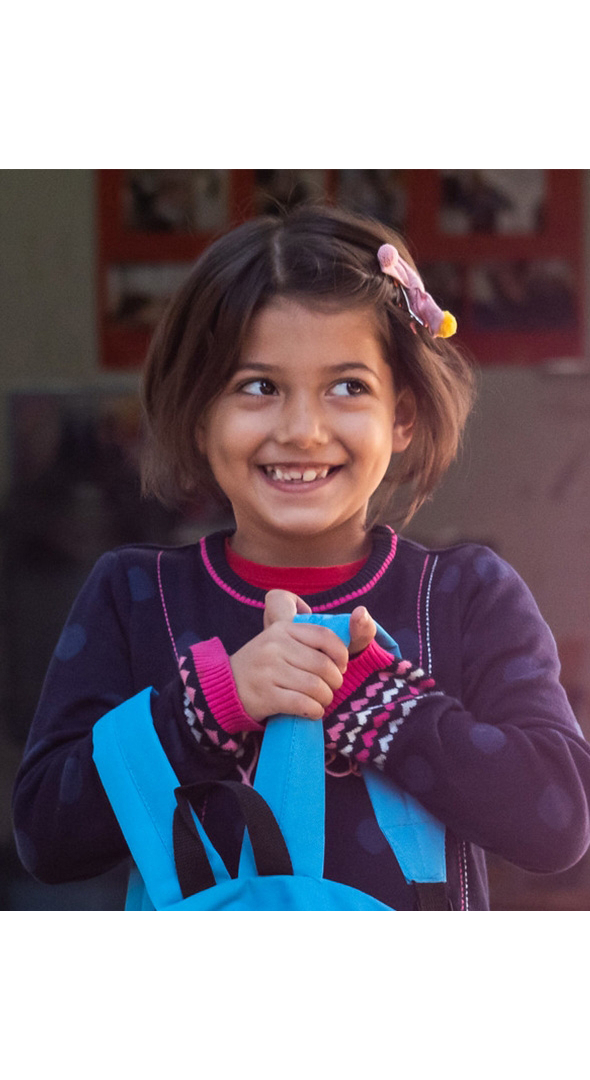© UNICEF/UN059873/Zar Mon
In Myanmar, landmines and unexploded ordnance present a daily risk of injury or death for children
Nine of Myanmar’s 14 States and Regions are contaminated with landmines and explosive remnants of war both from ongoing and past conflicts. The country has some of the highest mine accident rates in the world. On average, every three days a person is a victim of landmines, according to Myanmar’s Mine Risk Working Group. One out of every three victims is a child.
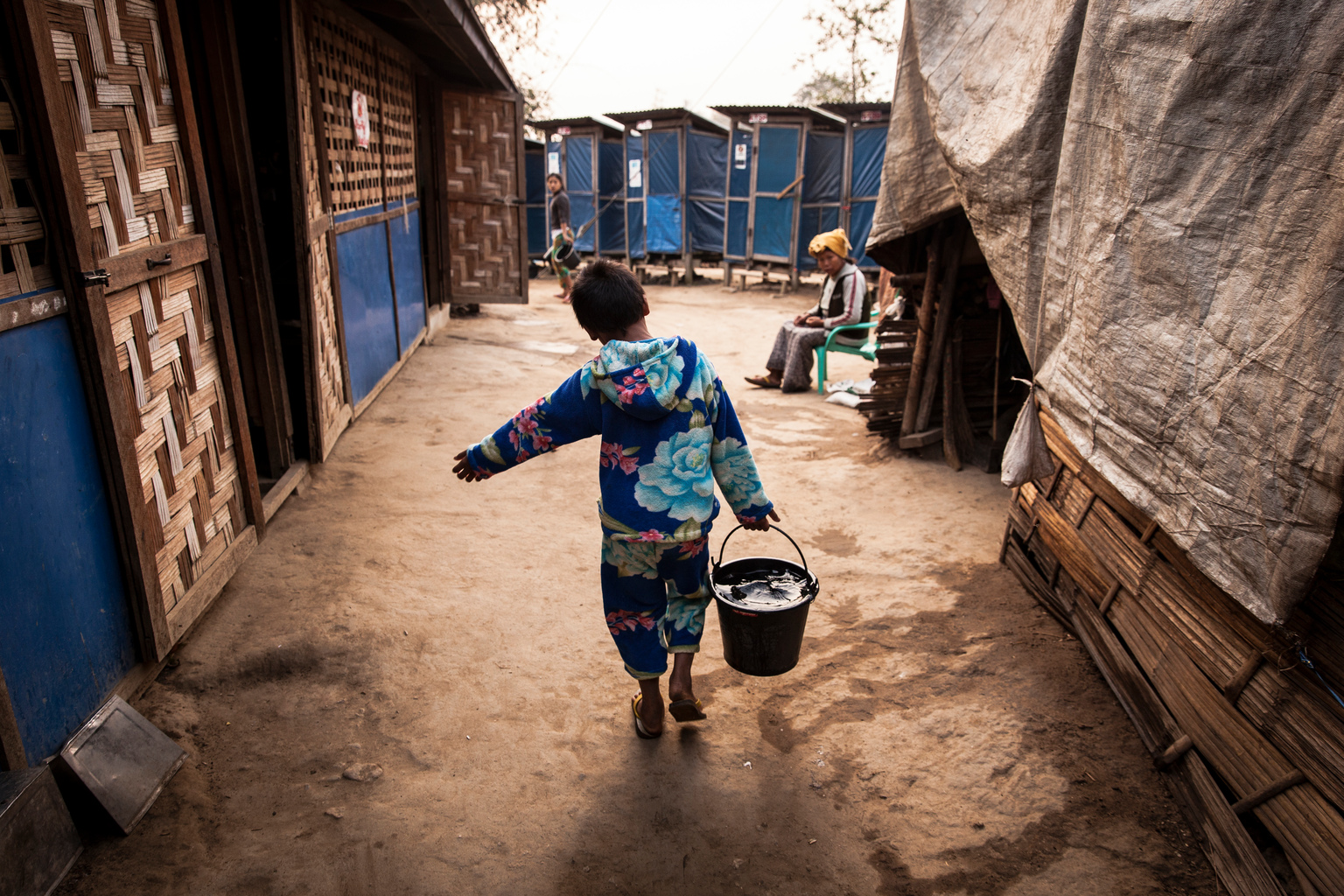 © UNICEF/UN061783/Brown
© UNICEF/UN061783/Brown
Aung Din, 12, on his way to bathe at the Phan Khar Kone IDP camp in Bhamo city, Kachin State. Aung Din’s father was killed in a blast, most likely from a landmine, while herding cattle, as fighting erupted between Kachin Independence Army (KIA) and the Myanmar Army in 2013.
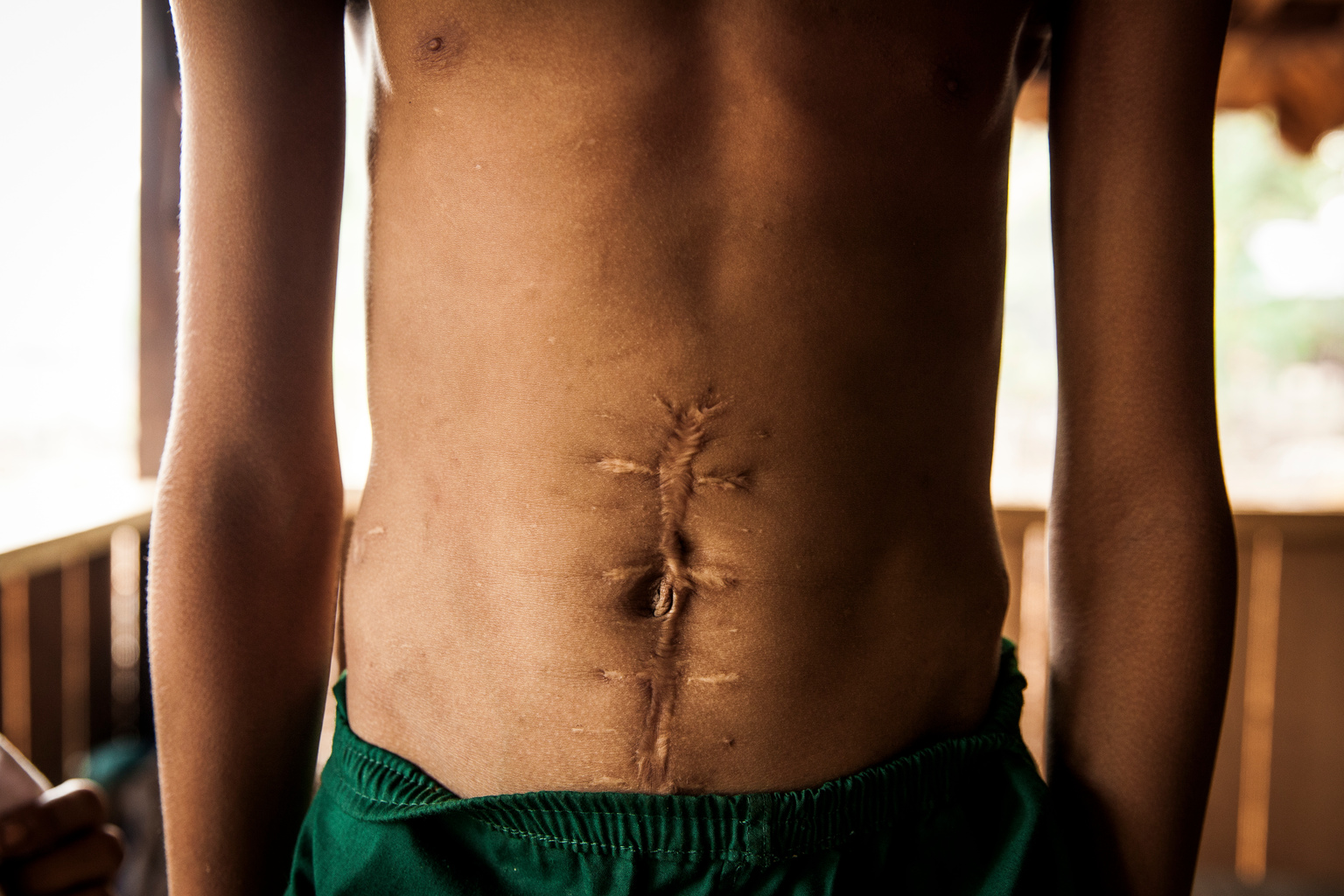 © UNICEF/UN061805/Brown
© UNICEF/UN061805/BrownMin Thiya, 10, shows a large scar from injuries sustained two-years ago when he and a group of his friends were playing in the woods and found unexploded ordnance. Two boys were killed and four others injured, including his best friend Saw Ba Sun, at Ann Ka Law village in Kayin State.
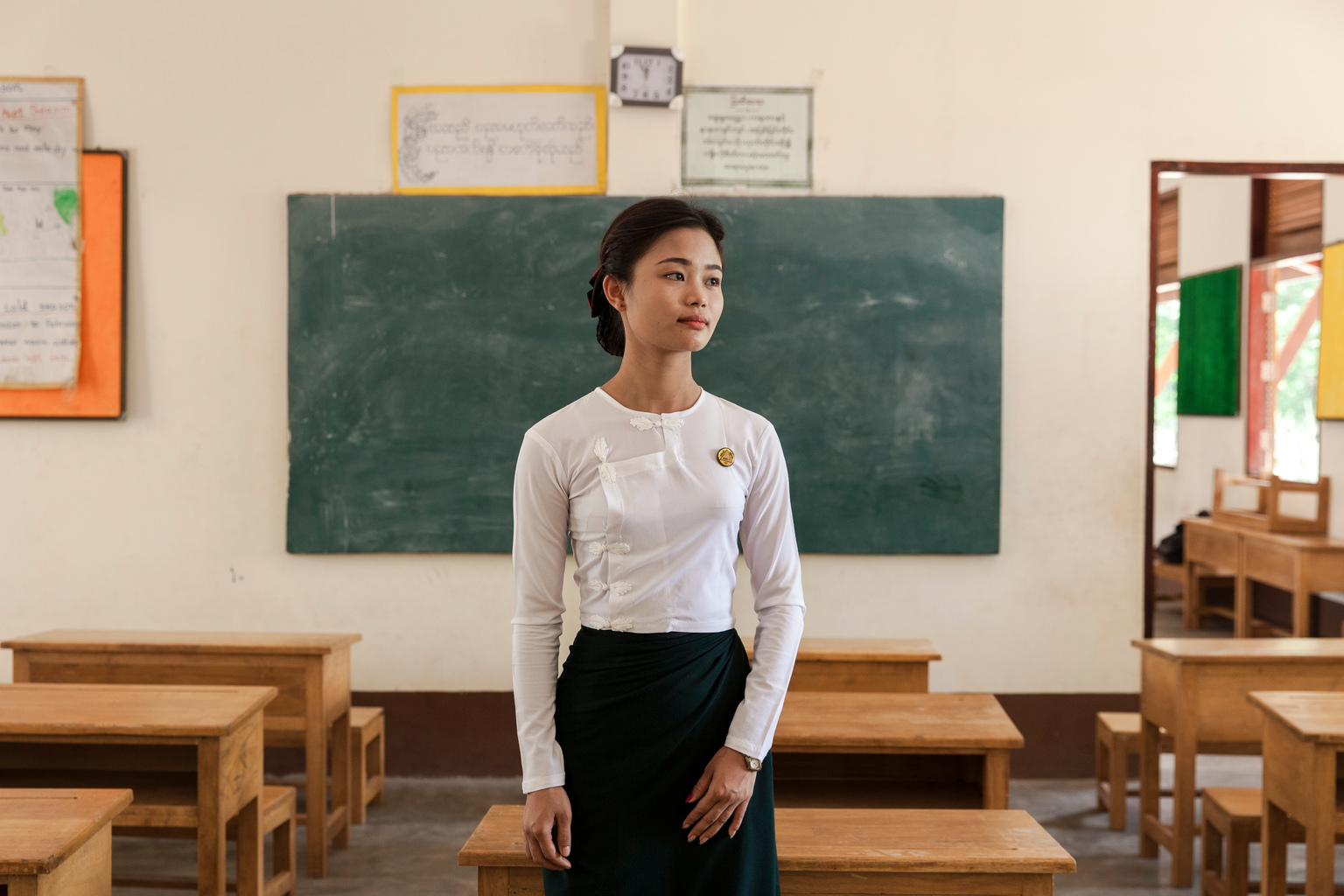 © UNICEF/UN061811/Brown
© UNICEF/UN061811/Brown“We always tell the children: if you find anything strange or unusual in the forest, never touch it, but go and tell an adult” says teacher Nan Maw Maw Kyi, who was one of the first at the scene of the blast — a deadly reminder of a conflict which has run for over 60 years.
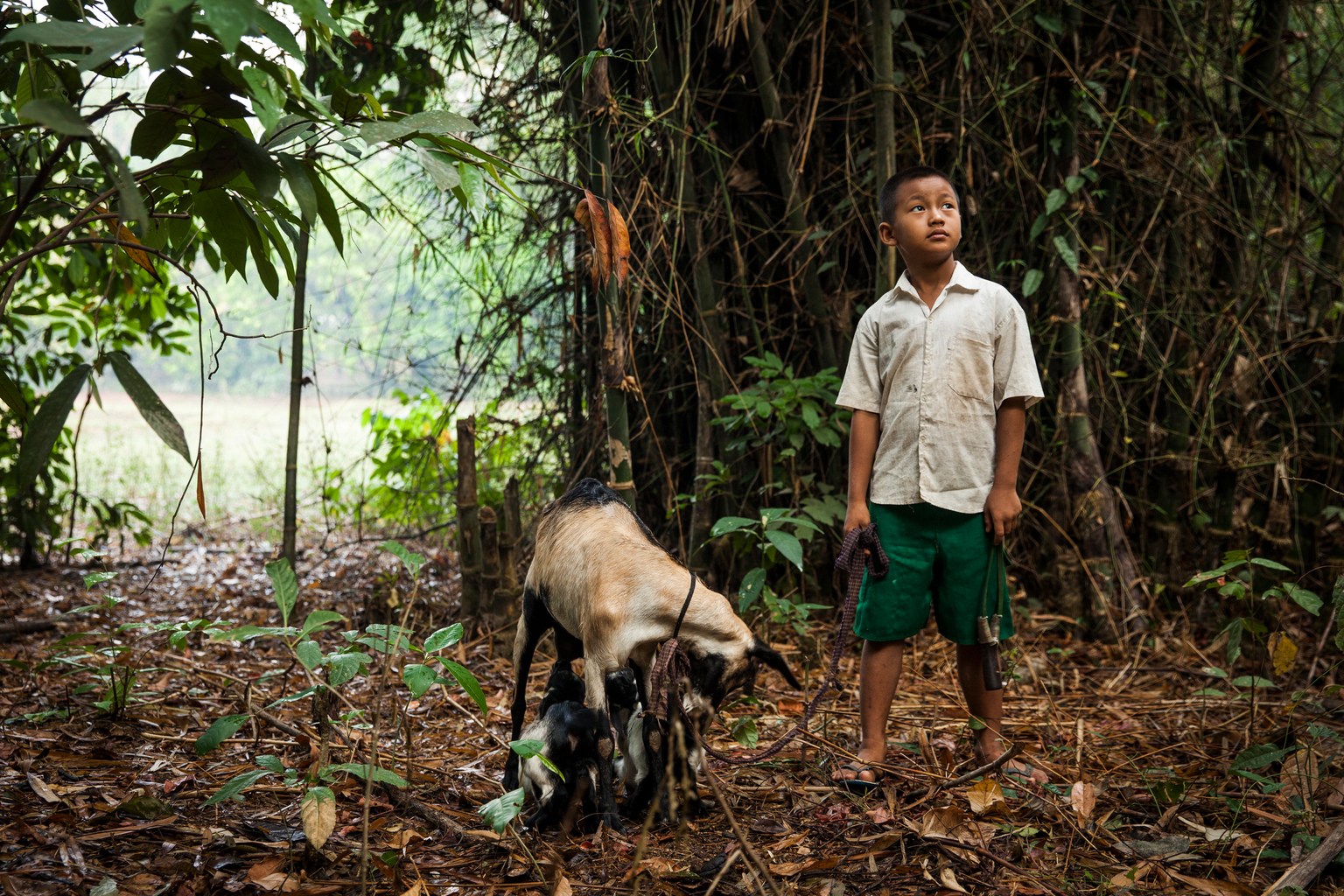 © UNICEF/UN061802/Brown
© UNICEF/UN061802/Brown“It felt heavy — and the metal was hot. Somehow, I knew it was dangerous” says Saw Ba Sun, 9, Min Thiya’s best friend who was also injured in the blast.
The unexploded ordnance that led to the accident was probably a remnant from clashes that had erupted weeks earlier.
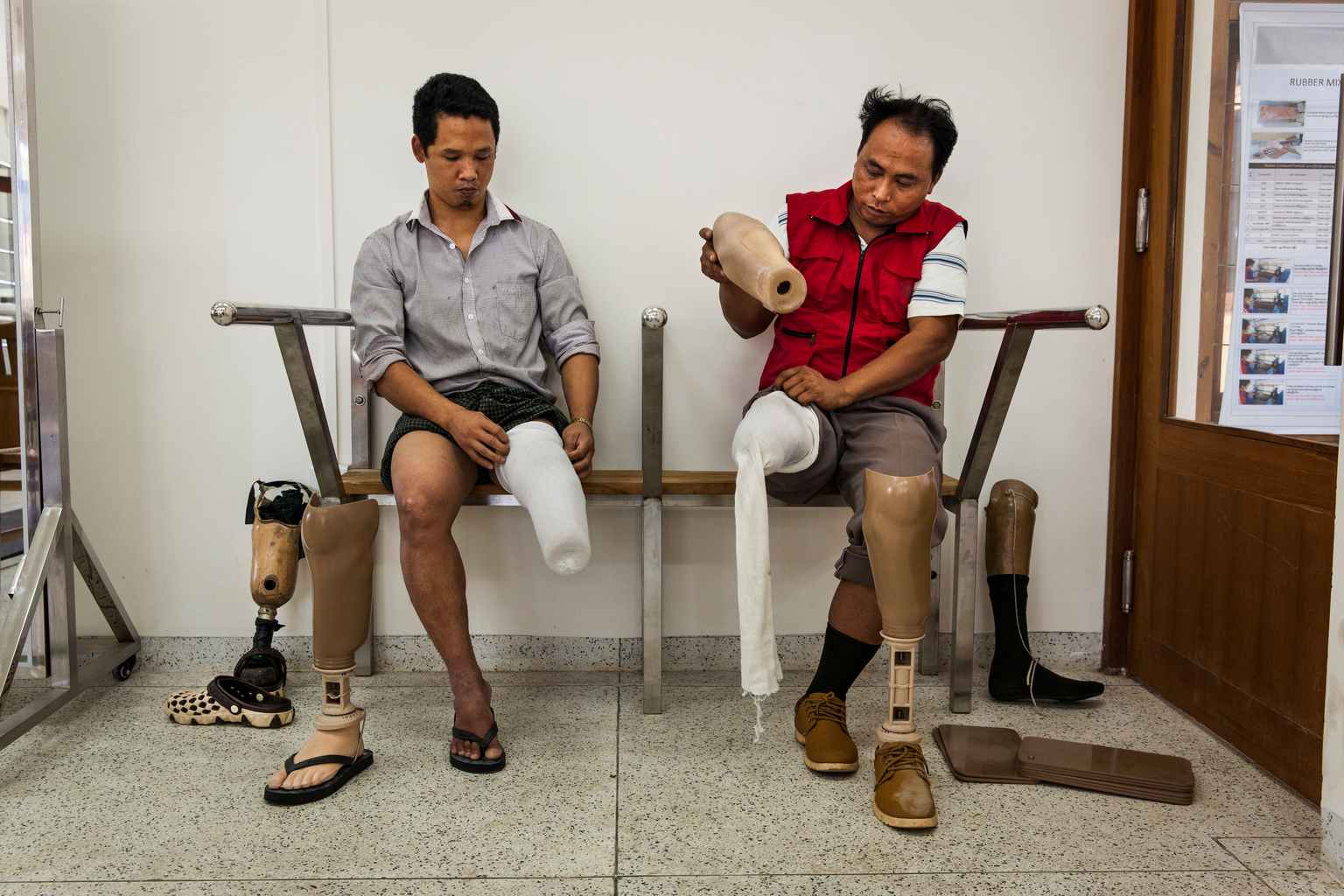 © UNICEF/UN061798/Brown
© UNICEF/UN061798/Brown
At a newly-opened physical rehabilitation centre in Myitkyina, Kachin State, Aung Soe Min, 42, (right) and Daung Ja, 33, are fitted with new prosthetic limbs. Min was injured as a government soldier while demining. Ja was injured while laying landmines for the Kachin Independence Army.
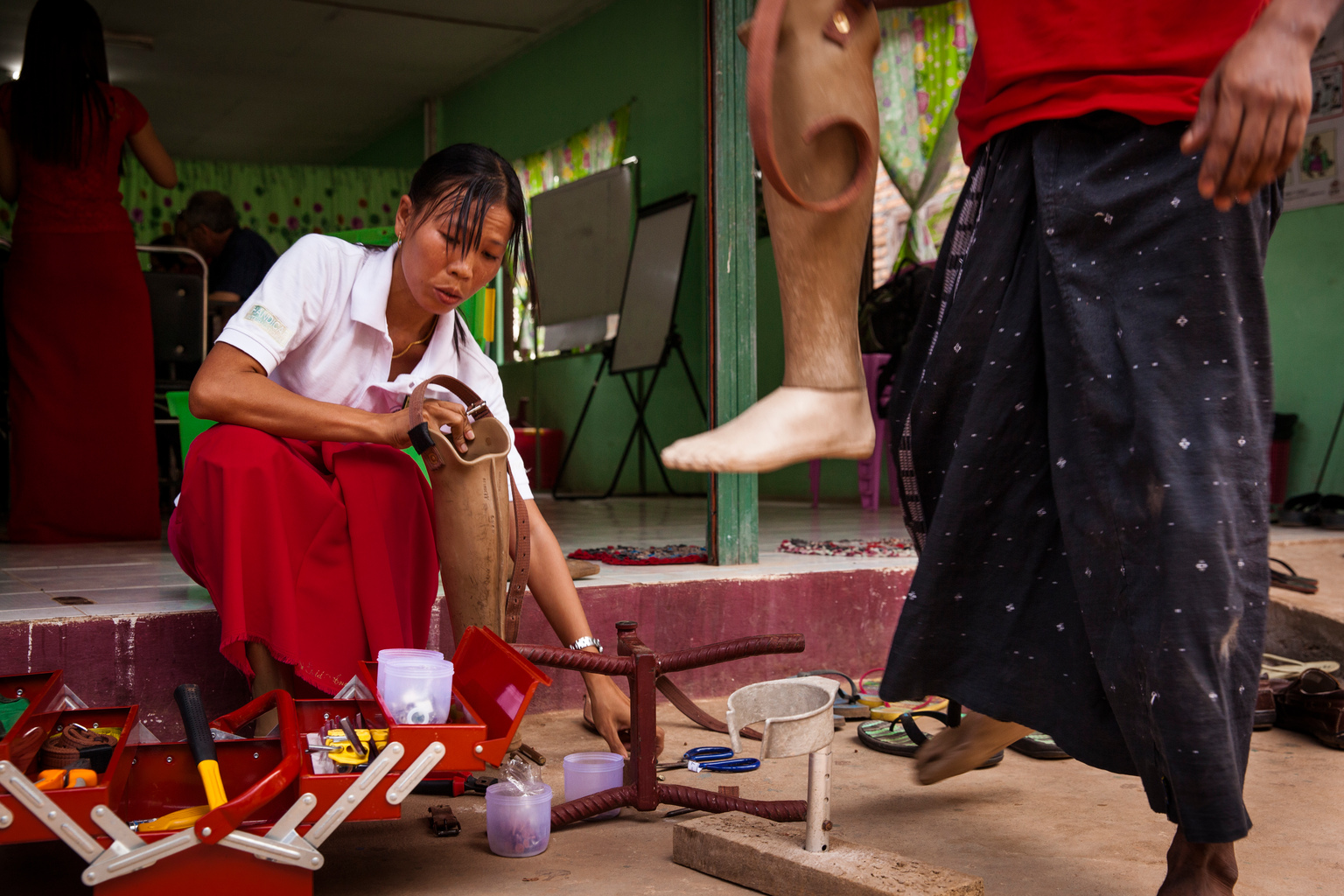 © UNICEF/UN061798/Brown
© UNICEF/UN061798/BrownSan San Maw, 33, lost her right leg when she trod on a landmine at the age of 13. She now volunteers at a Mine Victim Assistance Centre, in Kawkareik, Kayin State, supported by UNICEF, where she repairs prosthetic limbs. An estimated 5 million residents in Myanmar live in areas littered with the hidden weapons.
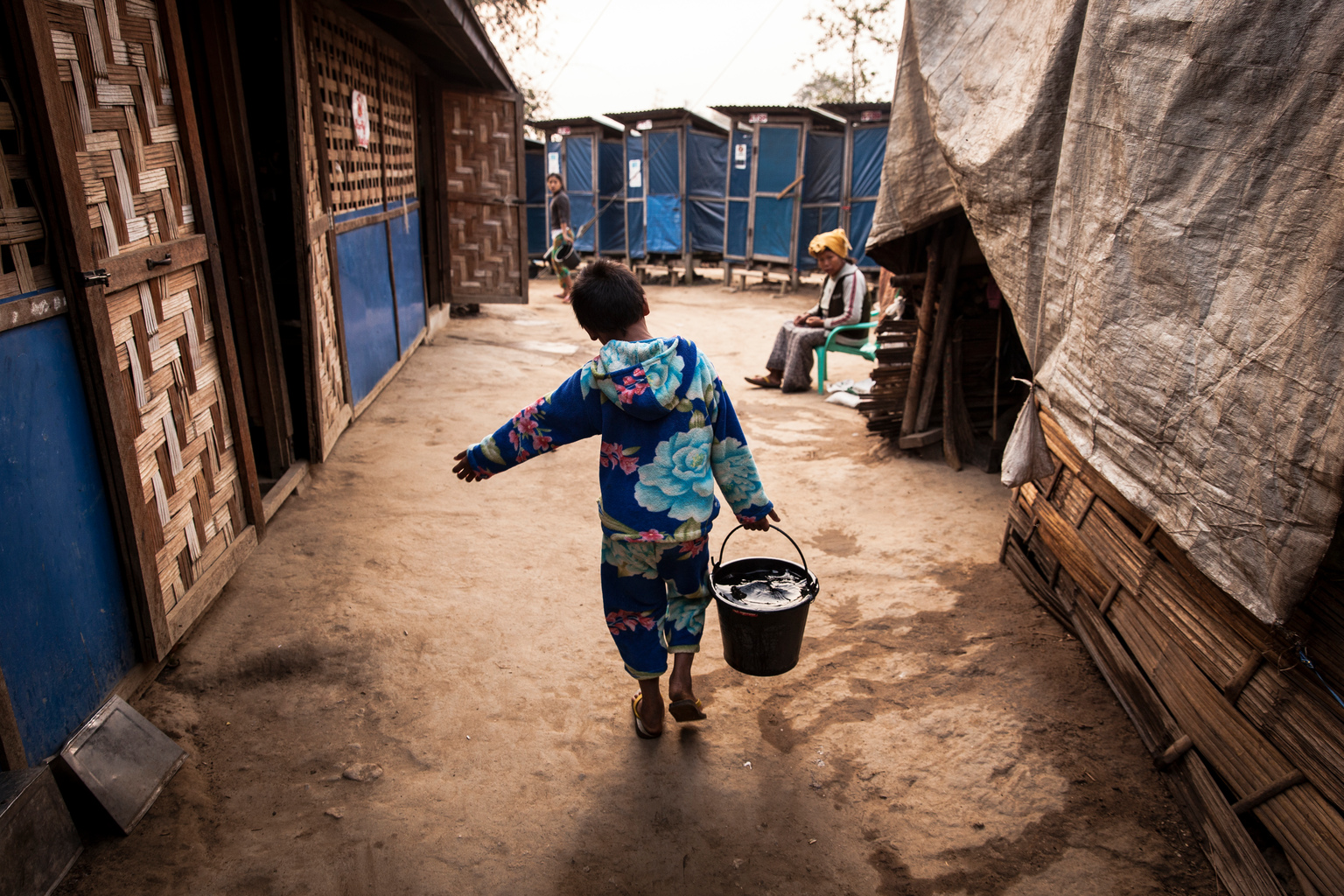 © UNICEF/UN061857/Brown
© UNICEF/UN061857/BrownThe ongoing violence in Myanmar continues to impact children whose lives have been shaped by conflict and the widespread use of landmines. Without renewed efforts to achieve peace and social cohesion, children like Aung Din will continue to suffer the consequences.
Donate now to support UNICEF's programmes worldwide








